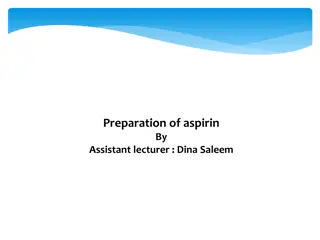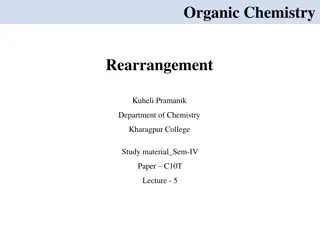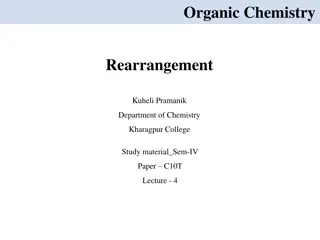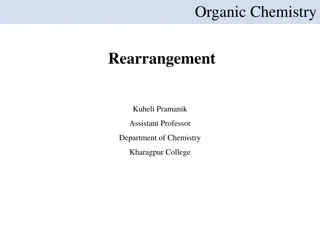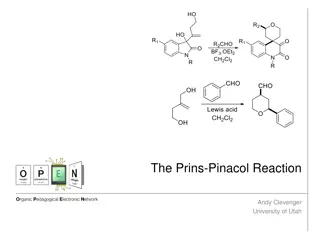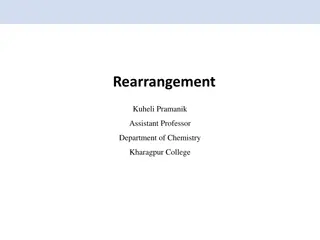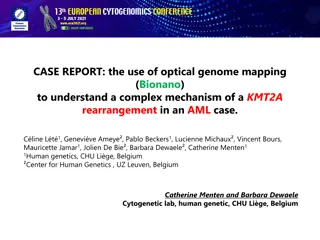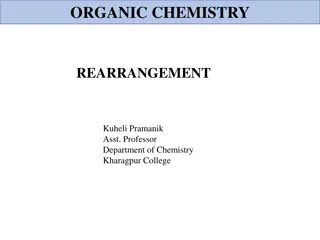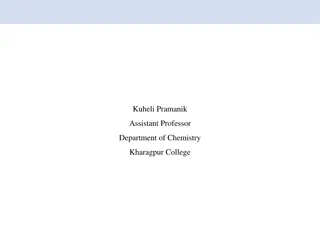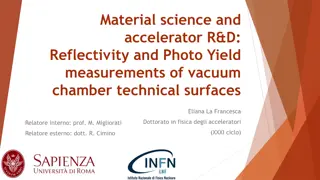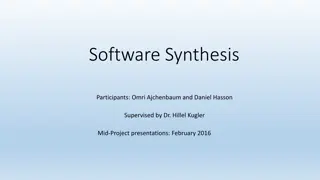The Synthesis of Cedranoid Sesquiterpenes via Photo-Rearrangement of Bicyclo[2.2.2] Octenones
Peter Yates, a renowned chemist, published over 200 papers and contributed significantly to the field of chemistry. His work on the structural characterization of various compounds, including Mangosteen and Shellolic Acid, is well-recognized. This article focuses on the synthesis of Cedranoid Sesquiterpenes through a photo-rearrangement process. Sesquiterpenes, composed of three 5-carbon isoprene units, are important molecules found in plants and insects. The past syntheses of Cedranoids and the oxa-di-methane rearrangement process are also discussed. The conclusion suggests the synthesis of a -diketone intermediate, enabling the addition of oxygenated functions along the carbon backbone.
Download Presentation

Please find below an Image/Link to download the presentation.
The content on the website is provided AS IS for your information and personal use only. It may not be sold, licensed, or shared on other websites without obtaining consent from the author.If you encounter any issues during the download, it is possible that the publisher has removed the file from their server.
You are allowed to download the files provided on this website for personal or commercial use, subject to the condition that they are used lawfully. All files are the property of their respective owners.
The content on the website is provided AS IS for your information and personal use only. It may not be sold, licensed, or shared on other websites without obtaining consent from the author.
E N D
Presentation Transcript
Bicyclopentanoid Sesquiterpenes. The Synthesis of Cedranoid Sesquiterpenes via the Photo- Rearrangement of Bicyclo[2.2.2]Octenones Peter Yates and K.E. Stevens Tetrahedron Vol.37, No. 25, pp.4401-4410, 1981
Peter Yates (1924-1992) B.Sc from the University of London, 1946. Ph.D with Werner Bergmann from Yale, 1951. Postdoctoral fellow with R. B. Woodward at Harvard, 1950-1951. Assistant Professor at Harvard, 1952- 1960 Professor of Chemistry at the University of Toronto, 1960-1992 Published over 200 papers. Peter Yates is well know for his structural characterization of Mangosteen, Shellolic Acid, and Haplophytine and the synthesis of Gambogic acid and Cedrene. 1
Cedranoid Sesquiterpenes Sesquiterpenes are a class of terpenes that are made up of three 5 carbon isoprene units. These molecules are found in plants and insects. Can act as defensive agents or pheromones. Very diverse in structure. Farnesyl pyrrophosphate (FPP) is the precursor to most sesquiterpenes. 2
Past Syntheses of Cedranoids 2 2 OH C C C A A B A B 1 A B None of these routes allow for more highly oxygenated cedranoids. 1.G. Stork and F.H. Clarke Jr., J. Am. Chem. Soc. 77, 1072 (1955); 83, 3114 (1961). 2. W. Parker, J.S. Roberts and R. Ramage, Quart. Rev. (London). 21, 331 (1967); J. S. Roberts, Terpenoids and Steroids (Edited by K. H. Overton), Vol. III, pp. 121-123, The Chemical Society of London (1973) 4
Oxa-di--methane Rearrangement This reaction takes place solely from the triplet state. ( - *) Direct irradiation of , unsaturated ketones gives rise to processes other than the oxa-di- -methane rearrangement. (Suggests inefficient intersystem crossing) Acetophenone is used as a triplet sensitizer. Three Possible Mechanisms for Action 7
Conclusion Synthesis of -diketone Intermediate in the synthesis of Stork and Clarke. Should allow for addition oxygenated functions along the carbon backbone. O O OH LiAlH4 0oC, Diethyl Ether 8
![The Synthesis of Cedranoid Sesquiterpenes via Photo-Rearrangement of Bicyclo[2.2.2] Octenones](https://cdn1.slideorbit.com/198279/bicyclopentanoid-sesquiterpenes-the-synthesis-n.jpg)





